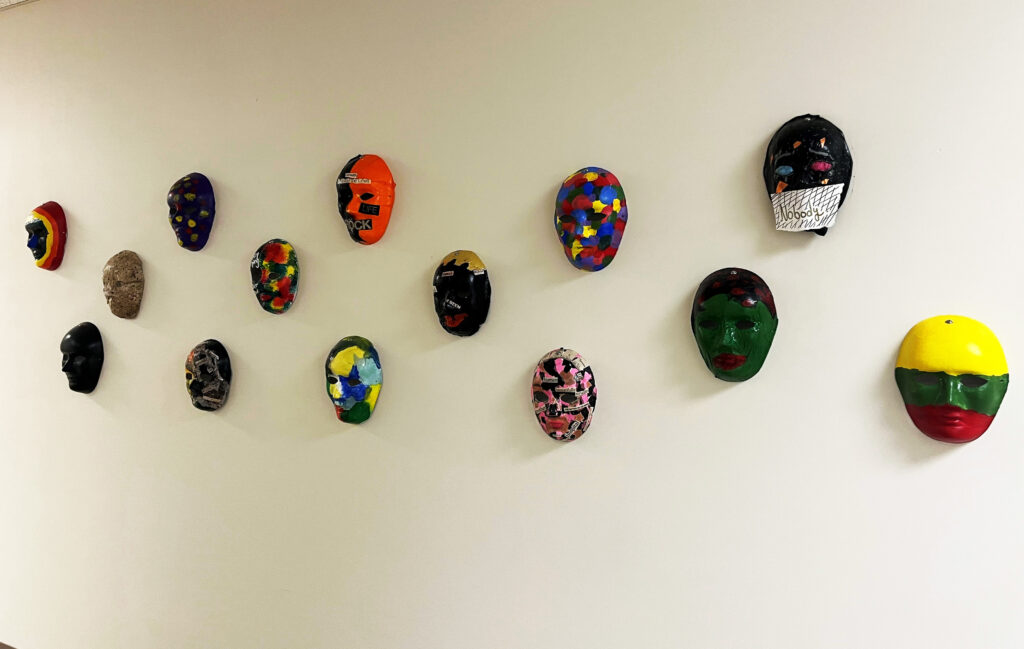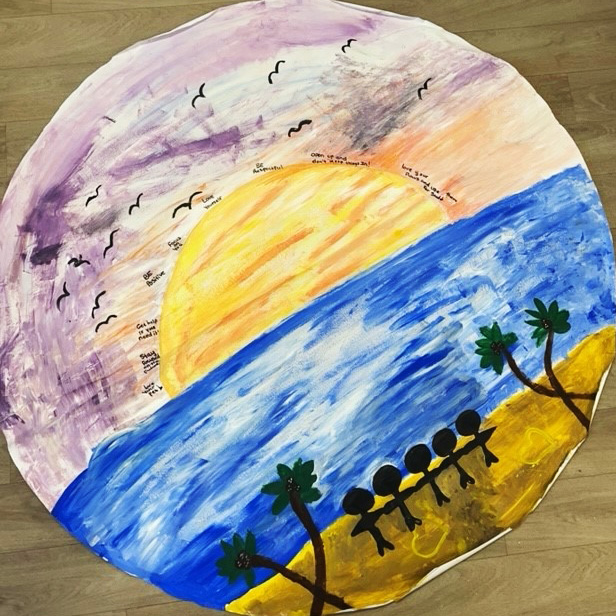Working as an art therapist in a psychiatric hospital
Spotlight
Who are you?
I trained as an art therapist at the University of Derby in the UK. After training, I returned to Barbados, where I am from, and then migrated to Trinidad and Tobago where I founded the Art Therapy Association of Trinidad and Tobago with colleagues. In 2022, I moved to the US where I now reside and practice as an art therapist in a psychiatric hospital.

Where I work as an art therapist
I work with Mary Washington Healthcare in the US, in the outpatient section of the psychiatric hospital which caters to both inpatient and outpatient clients. I work with a team of therapists on the outpatient programme who provide interventions on the day programmes. I also work with the inpatient team which is made up of a range of professionals including nurses, mental health technicians, psychiatrists and nurse practitioners.
The three areas that I provide services for are the partial hospitalisation programme (which focuses primarily on mental health), the intensive outpatient programme (which focus primarily on addictions) and the inpatient programme (for adolescents and adults who are experiencing a mental health crisis and require a higher level of care).
Getting here
I’ve always been passionate about art. I started out as a visual artist (my first exhibition was as a teenager) and writer. Initially I studied art education, then fashion merchandising. Although teaching was not my goal, I became an art teacher in Barbados and worked closely with my students, starting a photography and art club. I always felt that there were many ways that art supported relationship building. As a result, I decided that art therapy was a perfect profession to merge my interests.
My goal was always to return to Barbados and to contribute to building the art therapy profession on the island. However, when I returned, I was the only art therapist and there was no professional support for the practice on the island. As a result, I migrated to Trinidad to work in private practice. There I met other art therapists, and I was able to build a community. Together we were able to advocate for the profession of art therapy.
My experience with art therapy at the University of Derby was instrumental, in that it encouraged my passion for art and arts-based work and I was lucky to be able to use these in a substantial way in my work in Trinidad and Tobago. My training did not prepare me to practise in the Caribbean context, however, it did reinforce the value of research and that we can produce valuable knowledge by providing spaces for clients to tell their stories.
Working alongside passionate staff in organisations that have invested in my continued professional development, and valued the arts and wellbeing for staff, as well as clients, helped me develop my practice over the following decade. This helped me prepare for my current role as an art therapist in a psychiatric hospital.

A typical day at work
Normally I conduct three or four groups a day, which usually consists of a combination of both inpatient and outpatient groups. To work as an art therapist in this setting, I have to be flexible and respond in the moment. Each day is an adventure and depends on which clients attend and their particular experience at that point in time.
During the groups patients are invited to make art, reflect and share. I choose materials and topics to focus on, such as self-care, emotional regulation, coping skills and perception of self. We start out groups with a brief discussion, then patients are invited to make art, then share and reflect on their work in the group.
Sometimes the reflection is focused on specific prompts, for example takeaways from the exercise, or one thing you learned about yourself, and sometimes refelctions follow spontaneous conversation.
Some of the highlights of working in the psychiatric hospital include the fact that patients seem to really enjoy art therapy and, at times, provide valuable insights into life. It is an honour when patients share often profound life lessons with me through their art.

What I love about what I do
I love how for most patients, even when in crisis, art provides a way to heal and a refuge. I say this because I have seen patients who have been experiencing a lot of difficulty appear to become so relaxed after focusing on creating their artwork. It warms my heart to see this and I enjoy being able to facilitate it. I particularly love seeing how much patients enjoy model magic, which is an air-dry material like clay.
Ultimately, I believe in the power of art to heal, and this is why I do what I do.
How I look after myself in my role
Self-care is hard in acute mental health settings, especially because the models used within US health care do not necessarily focus on the mental health of the healthcare providers. I make sure that I prioritise myself by taking time off when I know I need it. It means paying attention to my body and acknowledging when I am approaching burn out.
Exercise is a big one for me, as well as spending time in nature, continuing my creative practice, and making sure that I visit one of my two Caribbean homes (Barbados or Trinidad and Tobago) regularly to recharge and to re-energise. I go to the sea and I ‘wash away the jumbies’ (which is a term used in some Caribbean islands to describe a ghost or presence which is haunting you).
What I wish I had known when I started
When I trained to become an art therapist, I had not anticipated or even considered the fact that art therapy in different regions would be so different from what we were taught. Part of this is that perceptions regarding mental health and art in general are ultimately very varied, depending on the setting.
Art therapy is a field that is grounded very much in European and Western paradigms. However, it is practised all over the world in many ways. My experiences have taught me that there is no one size fits all. It has helped me in my current role in the psychiatric hospital to learn how to ensure that my practice is culturally sensitive to the diverse groups of people I work with.

Moving forward
One of the things that has informed my passion for my work in the psychiatric hospital, is that there is beauty in diversity. This diversity that exists has the potential to co-create knowledge which can really enrich this area of art therapy practice. As we move forward in developing effective services for the people we work with, I think there is a place for Indigenous knowledge and decolonised research.
Including diverse voices and lived experiences will help us expand our knowledge, broaden our horizons and develop more effective, culturally sensitive approaches to art therapy practice in psychiatric hospitals.
